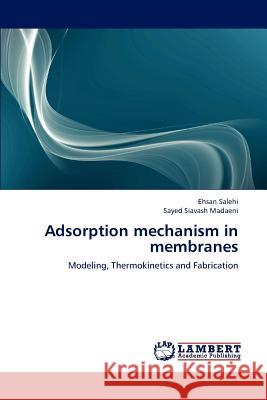Adsorption Mechanism in Membranes » książka
Adsorption Mechanism in Membranes
ISBN-13: 9783843307567 / Angielski / Miękka / 2012 / 220 str.
Adsorption plays a bilateral role as a membrane separation mechanism. As a fouling mechanism, adsorption is unfavorable and should be controlled; however, affinity membranes are powerful adsorbents for the separation of proteins and heavy metals. Such aspects of 'adsorption mechanism' with respect to 'membrane technology' have not been tackled in literature and thus, they are aimed by the current book. To study adsorption, mathematical modeling has been employed as well as classical thermodynamics. In this book, parameters affecting adsorptive fouling including membrane characteristics (e.g., conductivity, morphology, roughness), solution properties (e.g., ionic charge, pH) and operating conditions (e.g., temperature) have been studied. Besides, "imprinted membranes" and "thin adsorptive membranes" as novel membrane-adsorbents have been tackled. Ion-imprinted membranes can selectively adsorb target ions. Thin adsorptive membranes offer great potential for the separation of trace amounts of heavy metals. This book may be useful for the membranologists especially, those interested in adsorptive membranes, adsorptive fouling and modeling of transport phenomena in membranes.
Adsorption plays a bilateral role as a membrane separation mechanism. As a fouling mechanism, adsorption is unfavorable and should be controlled; however, affinity membranes are powerful adsorbents for the separation of proteins and heavy metals. Such aspects of adsorption mechanism with respect to membrane technology have not been tackled in literature and thus, they are aimed by the current book. To study adsorption, mathematical modeling has been employed as well as classical thermodynamics. In this book, parameters affecting adsorptive fouling including membrane characteristics (e.g., conductivity, morphology, roughness), solution properties (e.g., ionic charge, pH) and operating conditions (e.g., temperature) have been studied. Besides, "imprinted membranes" and "thin adsorptive membranes" as novel membrane-adsorbents have been tackled. Ion-imprinted membranes can selectively adsorb target ions. Thin adsorptive membranes offer great potential for the separation of trace amounts of heavy metals. This book may be useful for the membranologists especially, those interested in adsorptive membranes, adsorptive fouling and modeling of transport phenomena in membranes.











